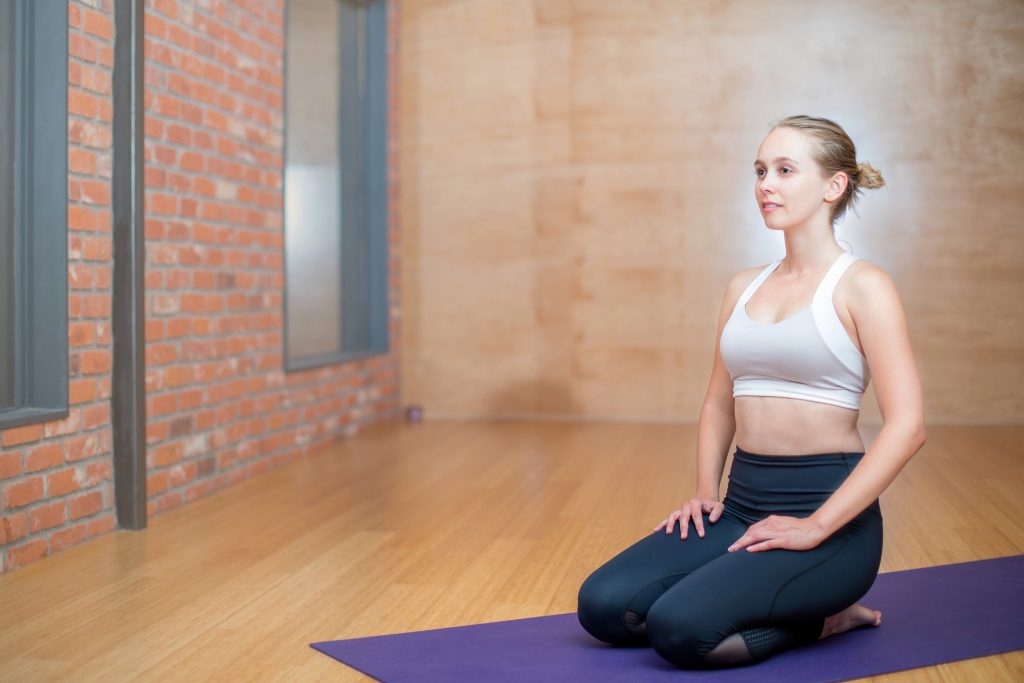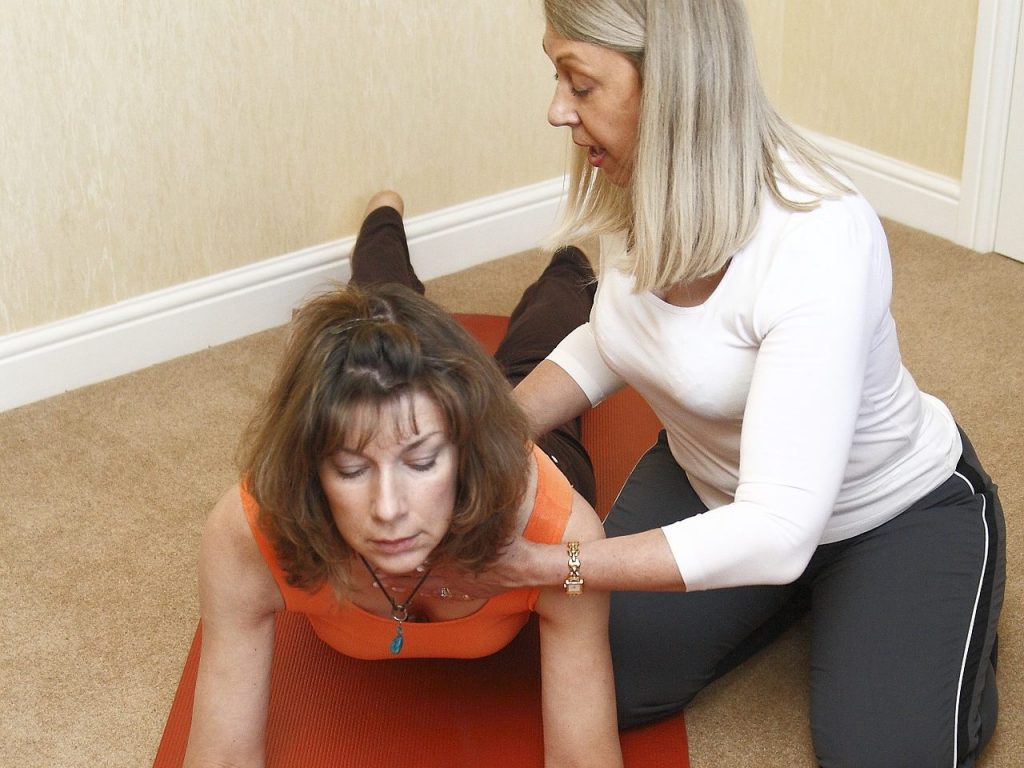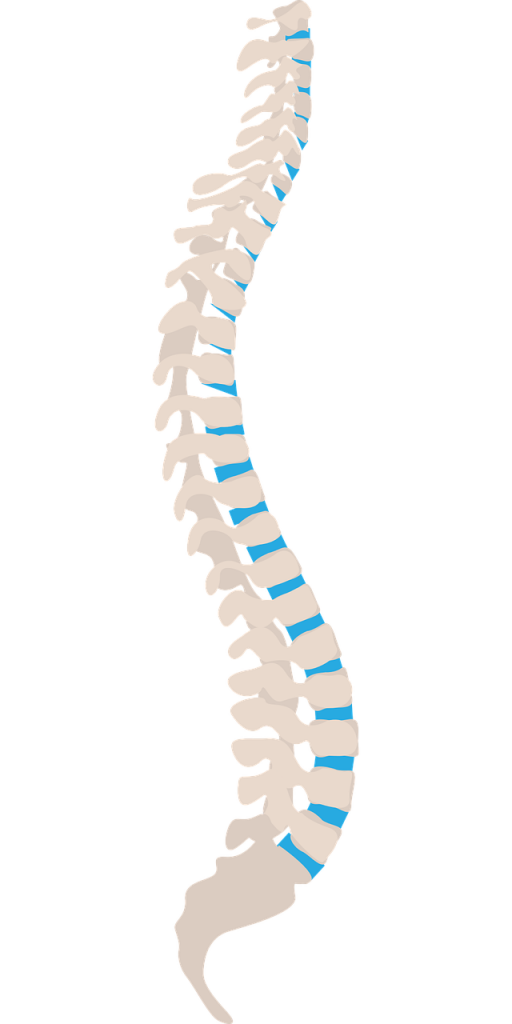Forward Head Posture
A forward head posture… also known as a texting neck.
You’ve probably seen it yourself, in those who are physically active but walk around with a chicken head or giraffe neck. Instead of a powerful, strong chest, their shoulders are hunched forward, their head droops down and their curved back almost gives them a hump. It looks weak, unhealthy, and unsightly. And it undoes all their hard work.
Your neck is designed to remain vertical, supporting the weight of your skull in a perfect line from the top of your head straight down through your body to your feet. When you look at yourself in the mirror from the side, your ear, your shoulder, and your hips should all be in a straight line down to the floor. If it is unaligned and your ear is in front of your shoulders, it’s a sure sign of forwarding head posture.
The average head weighs 10-12lbs. When your head sits perfectly upon your neck and shoulders, the body naturally adapts to holding this weight. But if your head is constantly pulled forward, the weight of your head pulls on your neck and puts pressure on your spine.
When your head is pulled forward the additional pressure on your neck, shoulders, and back rise dramatically causing serious tissue damage. In fact, every inch your head is thrust forward from its natural position adds another 10 lbs of stress on the neck, shoulders, back, and spine.
It’s why you may have developed that ugly ‘hump’ below your neck; to combat the stress of holding your head up, the body’s reaction has been to build up bone and fat tissue to compensate and protect the spine at the C7 vertebrae.
Forward Head Posture give your back that ugly hunch and crouched-over look… it may also cause much deeper, serious problems including:
- Constant fatigue and lack of energy
- Pain in your neck, shoulders, or upper, lower, and middle back
- Permanent damage to your joints, muscles, ligaments, blood vessels & nerves
- Headaches and migraines
- Poor sleep or insomnia
- Arthritis
- Impaired athletic performance
- Loss of height by 2 inches
- Looking 10 lbs fatter than you actually are
- Affects your hormonal health
- Noisy mouth breathing, snoring & sleep apnea
- Early degeneration of your spine
- Pinched and trapped nerves
- Decreased range of motion
- Lack of confidence
- Blood Flow to the Brain
- Asthma
- Decreased lung capacity by up to 30%
- Harmful effects on vision and hearing
- Jaw pain and sinus issues
- Dizziness, vertigo, and balance issues
- Burdens your digestive system
Here are 4 ways forward head posture is destroying your health:
OFFICE GUY SYNDROME
It’s like the old man’s hunch curving your body forward with your shoulders dropped making you look weak, submissive, and shorter than you really are. The curve of your neck and back means you may drop height by a couple of inches and look a lot older than you are.
DECLINING CONFIDENCE, ENERGY & MOOD
If you have poor head posture, the effects go beyond physical. Forward head posture can have a seriously detrimental effect on your mood, sapping your energy, leading to depressed thoughts, and hitting your confidence hard.
SLEEP DISRUPTION & BRAIN FOG
Forward head posture kills the quality of your sleep and you’re more likely to suffer from sleep apnea when you have a forward head posture. Due to the misalignment of your head and torso, your airway can become blocked when you sleep which starves your brain of oxygen, severely disrupts sleep quality, and leads to snoring.
When your brain does not get the blood and oxygen it requires to function, you’ll often experience side effects like headaches and migraines.
Without the rest you need your work, relationships and energy levels will be negatively affected.
THE PEAK PERFORMANCE TRAP
Forward Head Posture or what some people call “turtle neck” has been shown to decrease the strength in the muscles involved in breathing, which will decrease your breathing and reduce your lung capacity by 30% affecting athletic performance.
If you suffer from a forward head posture consider trying a combination of different techniques in this program >>>CLICK HERE<<< The program includes:
- muscle re-education drills
- breathing exercises
- mobility exercises
- deep cervical flexor training
- self-massage
- static stretching
- postural strengthening
Your Spinal Contour And Good Posture
Spinal contour
Either you are sitting, standing, working, sleeping or relaxing; your back spine is most comfortable in what is called a neutral posture. The neutral posture is a position about halfway between full bending and arching.
Your neutral back spine has three natural curves: the inward curve at the neck (cervical lordosis), the outward curve at the upper back (thoracic kyphosis), and finally the inward curve at the low back (lumbar lordosis).
The neutral spinal curves differ in shape from person to person. Neutral spinal curves can change for the better with exercise and training; And sometimes for the worse with injury, ageing, poor posture habits or a disease.
The amount of curving in your spine when you are in a neutral posture determines your support needs. A spinal support product should be deep enough to support your particular curves without pushing beyond your neutral postures. Meaning it should feel natural and not too arched; you should also feel supported; meaning there must not be a gap between you and the support.
Good posture
Time and again some people still have back pain while sitting with back support. That is because there are three main components to back spinal pain: movement, load & Posture. Movement refers to the effect of excessive or inadequate motion on the body’s circulatory and neuro-musculoskeletal system; Load is the weight one puts through one back spine; Posture refers to the curve of the back spine.
Unfortunately, not everybody can avoid back and neck symptoms by correcting their posture. Cushions can only improve one’s Posture, not necessarily take away all the pain.
If you show signs of any of the following symptoms, you might need more than good posture support from your spinal care product.
- Impaired tolerance for upright postures (weight-bearing loss)
- Inability to stay in one posture, even a good neutral posture, for prolonged periods of time (constrained posture intolerance)
- Discomfort when furniture or supports come in contact with your body (pressure intolerance)
If you need help with a forward head posture consider trying a combination of different techniques in this program >>>CLICK HERE<<<
“The way I see it, if you want the rainbow, you gotta put up with the rain.”
Dolly Parton
If you have enjoyed our article, check for more information and tips on our site Spry Ladies, our Facebook, or our pins on Pinterest and YouTube, too.






